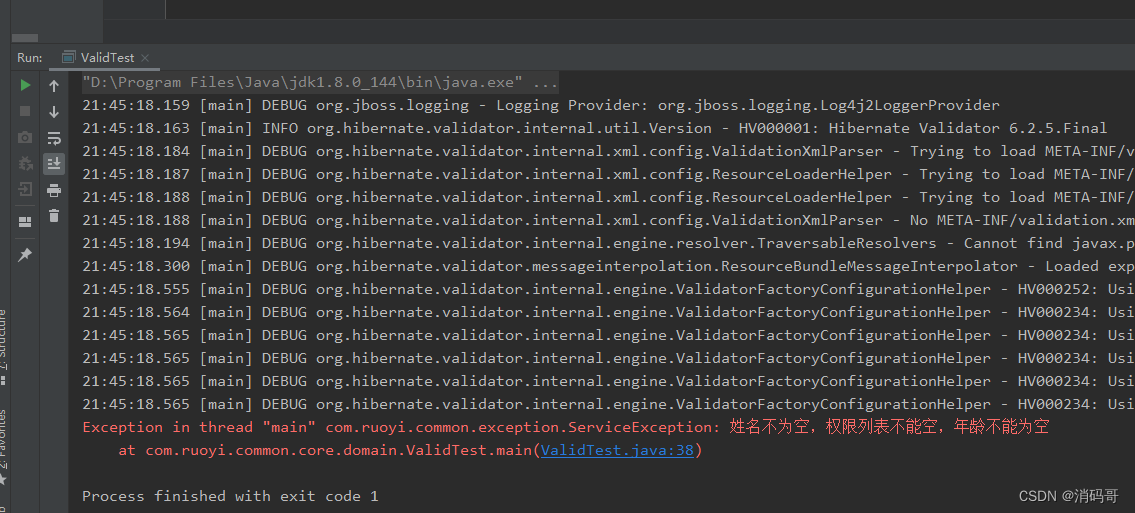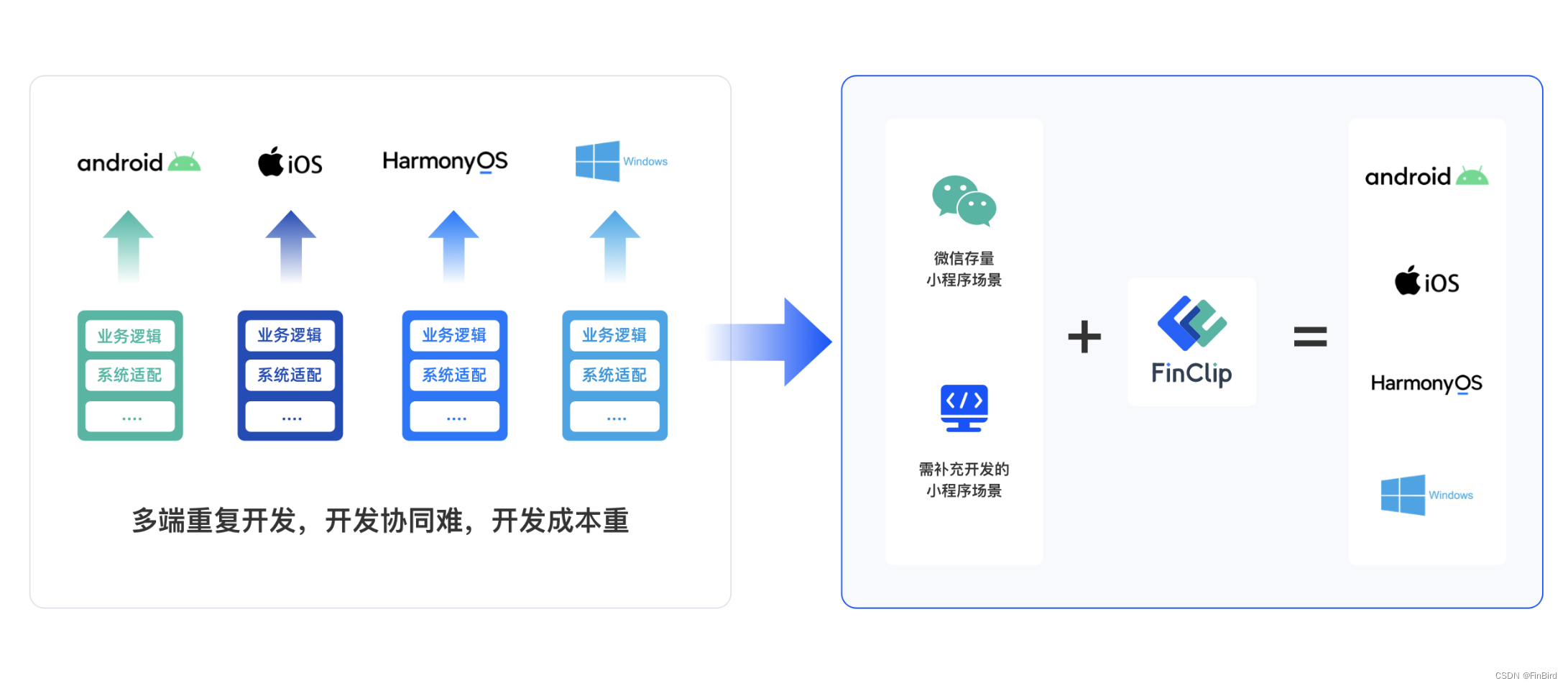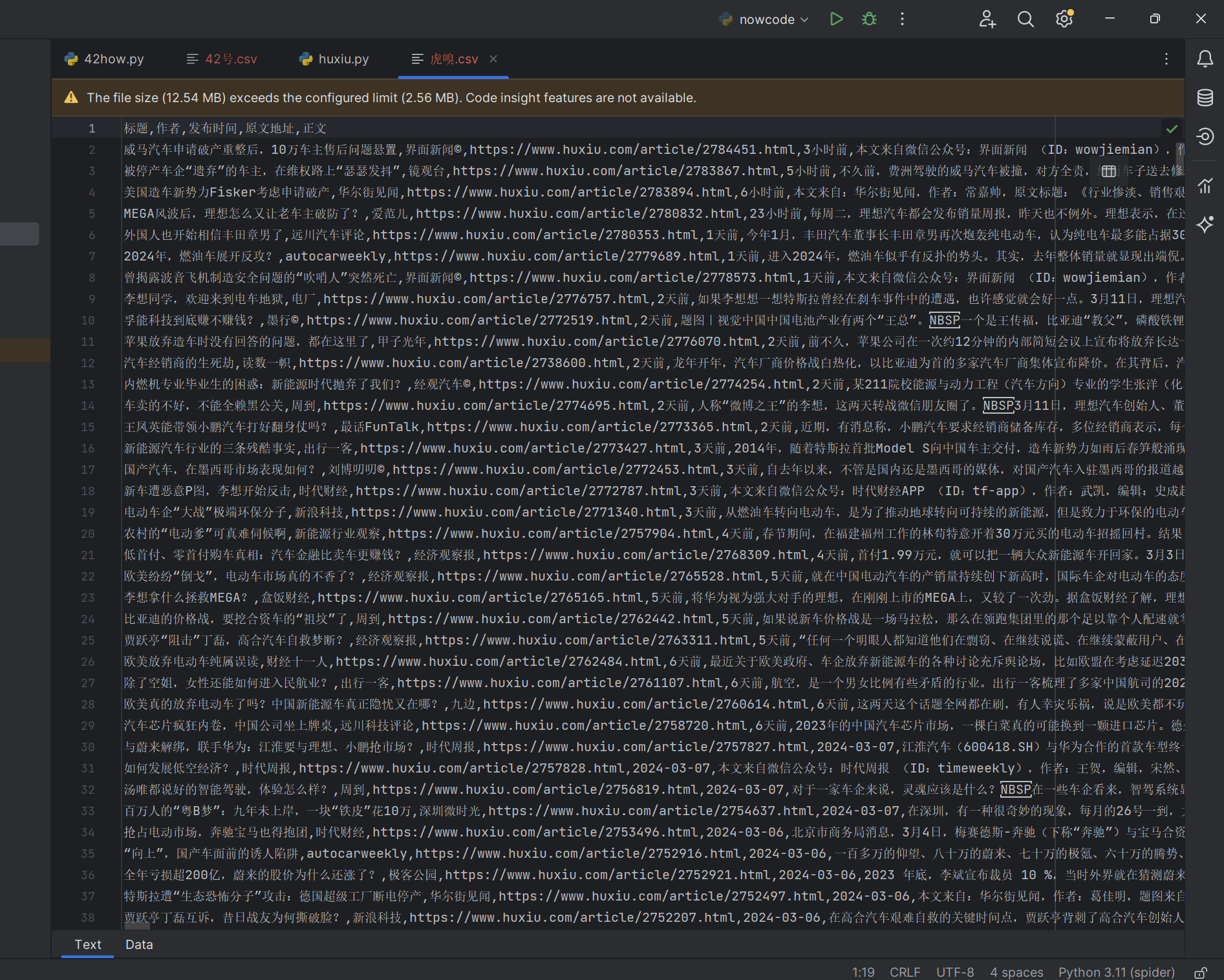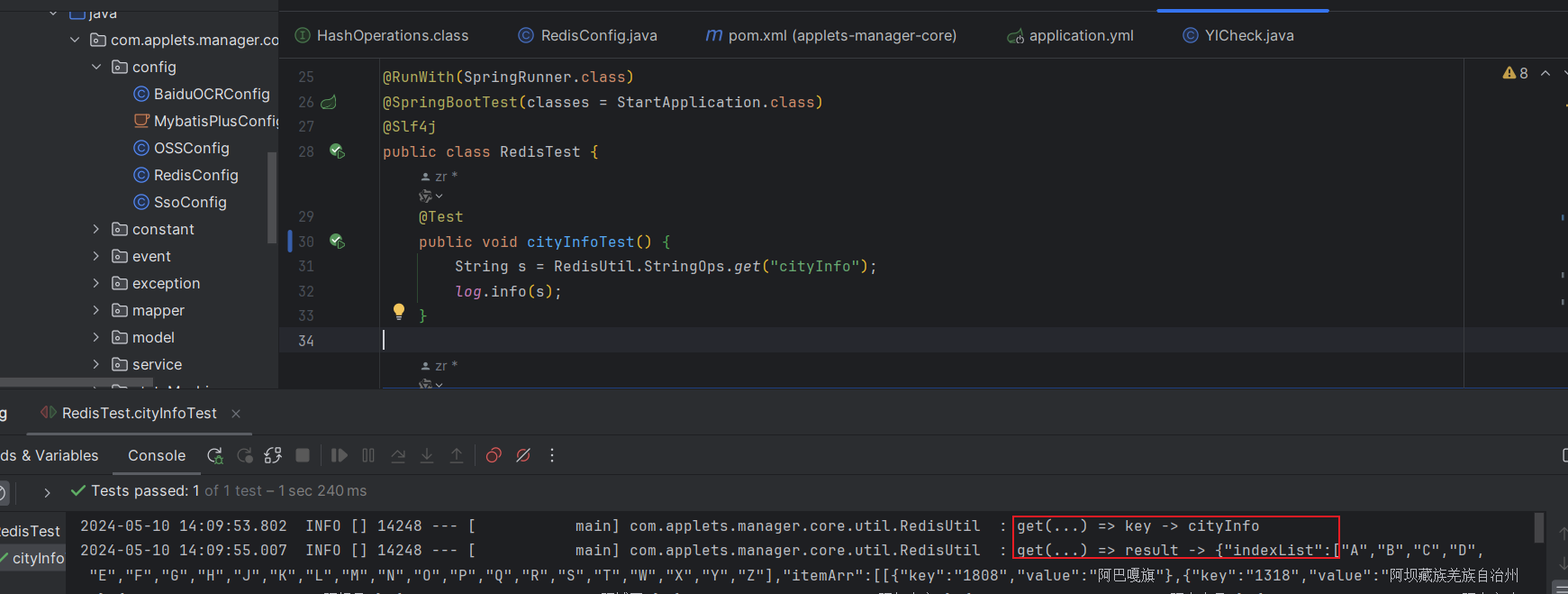支持向量机(Support Vector Machine,SVM)是一种监督学习模型,适用于分类和回归任务。SVM 尤其擅长处理小样本、高维度数据,以及复杂的分类任务。其基本思想是找到最佳的超平面将不同类别分开,并最大化两类之间的间隔(Margin)。
支持向量机的工作原理
- 超平面:在特征空间中将不同类别分开的决策边界。
- 支持向量:离超平面最近的训练样本,决定超平面的方向和位置。
- 核函数:
- 线性核:适用于线性可分问题。
- 多项式核:适用于非线性数据。
- 高斯核(RBF 核):适用于复杂非线性数据。
Python 实现:SVM 分类
我们可以使用 scikit-learn 库来实现 SVM 分类器。
案例分析:鸢尾花分类
Python 实现:
# 导入所需库
from sklearn import datasets
from sklearn.model_selection import train_test_split
from sklearn.svm import SVC
from sklearn.metrics import classification_report, confusion_matrix, accuracy_score
import seaborn as sns
import matplotlib.pyplot as plt
# 加载鸢尾花数据集
iris = datasets.load_iris()
X = iris.data
y = iris.target
# 划分训练集和测试集
X_train, X_test, y_train, y_test = train_test_split(X, y, test_size=0.3, random_state=42)
# 创建 SVM 模型
svm = SVC(kernel='linear', C=1, random_state=42)
svm.fit(X_train, y_train)
# 预测测试集
y_pred = svm.predict(X_test)
# 输出分类报告和混淆矩阵
print("Classification Report:")
print(classification_report(y_test, y_pred, target_names=iris.target_names))
print("Confusion Matrix:")
cm = confusion_matrix(y_test, y_pred)
sns.heatmap(cm, annot=True, fmt="d", cmap="Blues", xticklabels=iris.target_names, yticklabels=iris.target_names)
plt.xlabel("Predicted")
plt.ylabel("Actual")
plt.show()
# 输出准确率
accuracy = accuracy_score(y_test, y_pred)
print(f"Accuracy: {accuracy:.2f}")
案例分析:使用非线性核(RBF 核)进行分类
Python 实现:
# 导入所需库
from sklearn import datasets
from sklearn.model_selection import train_test_split
from sklearn.svm import SVC
from sklearn.metrics import classification_report, confusion_matrix, accuracy_score
import seaborn as sns
import matplotlib.pyplot as plt
# 加载鸢尾花数据集
iris = datasets.load_iris()
X = iris.data
y = iris.target
# 划分训练集和测试集
X_train, X_test, y_train, y_test = train_test_split(X, y, test_size=0.3, random_state=42)
# 创建 SVM 模型(使用 RBF 核)
svm_rbf = SVC(kernel='rbf', C=1, gamma=0.1, random_state=42)
svm_rbf.fit(X_train, y_train)
# 预测测试集
y_pred_rbf = svm_rbf.predict(X_test)
# 输出分类报告和混淆矩阵
print("\nClassification Report (RBF Kernel):")
print(classification_report(y_test, y_pred_rbf, target_names=iris.target_names))
print("Confusion Matrix (RBF Kernel):")
cm_rbf = confusion_matrix(y_test, y_pred_rbf)
sns.heatmap(cm_rbf, annot=True, fmt="d", cmap="Blues", xticklabels=iris.target_names, yticklabels=iris.target_names)
plt.xlabel("Predicted")
plt.ylabel("Actual")
plt.show()
# 输出准确率
accuracy_rbf = accuracy_score(y_test, y_pred_rbf)
print(f"Accuracy (RBF Kernel): {accuracy_rbf:.2f}")
Python 实现:SVM 回归
支持向量机还可以用于回归问题,称为支持向量回归(Support Vector Regression,SVR)。
案例分析:波士顿房价预测
Python 实现:
# 导入所需库
from sklearn import datasets
from sklearn.model_selection import train_test_split
from sklearn.svm import SVR
from sklearn.metrics import mean_squared_error, mean_absolute_error, r2_score
import matplotlib.pyplot as plt
# 加载波士顿房价数据集
boston = datasets.load_boston()
X = boston.data
y = boston.target
# 划分训练集和测试集
X_train, X_test, y_train, y_test = train_test_split(X, y, test_size=0.3, random_state=42)
# 创建 SVR 模型(使用 RBF 核)
svr_rbf = SVR(kernel='rbf', C=1, gamma=0.1)
svr_rbf.fit(X_train, y_train)
# 预测测试集
y_pred_rbf = svr_rbf.predict(X_test)
# 输出性能指标
mse = mean_squared_error(y_test, y_pred_rbf)
mae = mean_absolute_error(y_test, y_pred_rbf)
r2 = r2_score(y_test, y_pred_rbf)
print(f"Mean Squared Error (RBF Kernel): {mse:.2f}")
print(f"Mean Absolute Error (RBF Kernel): {mae:.2f}")
print(f"R-squared Score (RBF Kernel): {r2:.2f}")
# 绘制预测值与实际值的散点图
plt.scatter(y_test, y_pred_rbf, alpha=0.5)
plt.xlabel("Actual Values")
plt.ylabel("Predicted Values")
plt.title("Actual vs Predicted Values (SVR - RBF Kernel)")
plt.show()
超参数调优
SVM 的性能依赖于超参数的设置,如 C、gamma 和核函数。我们可以使用 GridSearchCV 进行超参数调优。
Python 实现:SVM 超参数调优
鸢尾花分类案例:
from sklearn import datasets
from sklearn.model_selection import train_test_split, GridSearchCV
from sklearn.svm import SVC
from sklearn.metrics import classification_report, accuracy_score
import seaborn as sns
import matplotlib.pyplot as plt
# 加载鸢尾花数据集
iris = datasets.load_iris()
X = iris.data
y = iris.target
# 划分训练集和测试集
X_train, X_test, y_train, y_test = train_test_split(X, y, test_size=0.3, random_state=42)
# 定义参数网格
param_grid = {
'C': [0.1, 1, 10, 100],
'gamma': [0.01, 0.1, 1, 10],
'kernel': ['linear', 'rbf']
}
# 使用 GridSearchCV 进行超参数调优
svm = SVC(random_state=42)
grid_search = GridSearchCV(estimator=svm, param_grid=param_grid, cv=5, scoring='accuracy')
grid_search.fit(X_train, y_train)
# 输出最佳参数组合
print("Best Parameters:", grid_search.best_params_)
# 使用最佳参数组合进行分类
best_svm = grid_search.best_estimator_
y_pred = best_svm.predict(X_test)
# 输出分类报告
print("\nClassification Report:")
print(classification_report(y_test, y_pred, target_names=iris.target_names))
# 输出准确率
accuracy = accuracy_score(y_test, y_pred)
print(f"Accuracy: {accuracy:.2f}")
# 绘制混淆矩阵
cm = confusion_matrix(y_test, y_pred)
sns.heatmap(cm, annot=True, fmt="d", cmap="Blues", xticklabels=iris.target_names, yticklabels=iris.target_names)
plt.xlabel("Predicted")
plt.ylabel("Actual")
plt.show()
结论
SVM 分类和回归:
SVM 适用于分类和回归问题,能够处理线性和非线性数据。核函数选择:
根据数据的分布情况选择适合的核函数(线性、RBF、Polynomial 等)。超参数调优:
通过调整C、gamma和kernel参数可以显著提高模型性能。可视化和解释:
使用混淆矩阵、特征重要性等可视化工具解释模型。
更多 SVM 技术细节和扩展
为了更深入地理解和应用支持向量机,我们可以进一步探索以下内容:
- 使用不同核函数:在非线性数据中,不同的核函数可能具有不同的性能。
- 数据预处理与标准化:SVM 对数据的标准化和预处理比较敏感,通常需要进行标准化。
- 与其他模型的比较:可以与随机森林、k 近邻等模型进行比较。
- 实际应用案例:尝试在实际数据集上应用 SVM,包括文本分类等。
使用不同核函数
在 SVM 中,不同的核函数适用于不同类型的数据。
Python 实现:使用不同核函数进行鸢尾花分类
# 导入所需库
from sklearn import datasets
from sklearn.model_selection import train_test_split
from sklearn.svm import SVC
from sklearn.metrics import classification_report, confusion_matrix, accuracy_score
import seaborn as sns
import matplotlib.pyplot as plt
# 加载鸢尾花数据集
iris = datasets.load_iris()
X = iris.data
y = iris.target
# 划分训练集和测试集
X_train, X_test, y_train, y_test = train_test_split(X, y, test_size=0.3, random_state=42)
# 定义不同核函数的 SVM 模型
kernels = ['linear', 'poly', 'rbf', 'sigmoid']
results = {}
for kernel in kernels:
svm = SVC(kernel=kernel, C=1, random_state=42)
svm.fit(X_train, y_train)
y_pred = svm.predict(X_test)
accuracy = accuracy_score(y_test, y_pred)
results[kernel] = accuracy
print(f"\nClassification Report ({kernel} Kernel):")
print(classification_report(y_test, y_pred, target_names=iris.target_names))
# 绘制混淆矩阵
cm = confusion_matrix(y_test, y_pred)
sns.heatmap(cm, annot=True, fmt="d", cmap="Blues", xticklabels=iris.target_names, yticklabels=iris.target_names)
plt.xlabel("Predicted")
plt.ylabel("Actual")
plt.title(f"Confusion Matrix ({kernel} Kernel)")
plt.show()
# 绘制不同核函数的准确率比较图
plt.bar(results.keys(), results.values())
plt.xlabel("Kernel")
plt.ylabel("Accuracy Score")
plt.title("Accuracy Comparison (Different SVM Kernels)")
plt.show()
数据预处理与标准化
支持向量机对数据的尺度敏感,通常需要对数据进行标准化处理,以获得更好的性能。
Python 实现:标准化处理的鸢尾花分类
# 导入所需库
from sklearn import datasets
from sklearn.model_selection import train_test_split
from sklearn.preprocessing import StandardScaler
from sklearn.svm import SVC
from sklearn.metrics import classification_report, confusion_matrix, accuracy_score
import seaborn as sns
import matplotlib.pyplot as plt
# 加载鸢尾花数据集
iris = datasets.load_iris()
X = iris.data
y = iris.target
# 划分训练集和测试集
X_train, X_test, y_train, y_test = train_test_split(X, y, test_size=0.3, random_state=42)
# 数据标准化
scaler = StandardScaler()
X_train = scaler.fit_transform(X_train)
X_test = scaler.transform(X_test)
# 创建 SVM 模型
svm = SVC(kernel='rbf', C=1, gamma=0.1, random_state=42)
svm.fit(X_train, y_train)
# 预测测试集
y_pred = svm.predict(X_test)
# 输出分类报告和混淆矩阵
print("Classification Report (Standardized Data):")
print(classification_report(y_test, y_pred, target_names=iris.target_names))
print("Confusion Matrix (Standardized Data):")
cm = confusion_matrix(y_test, y_pred)
sns.heatmap(cm, annot=True, fmt="d", cmap="Blues", xticklabels=iris.target_names, yticklabels=iris.target_names)
plt.xlabel("Predicted")
plt.ylabel("Actual")
plt.show()
# 输出准确率
accuracy = accuracy_score(y_test, y_pred)
print(f"Accuracy (Standardized Data): {accuracy:.2f}")
与其他模型的比较
可以将 SVM 与其他模型进行比较,如随机森林、k 近邻等。
Python 实现:鸢尾花分类中 SVM 与其他模型的比较
from sklearn.ensemble import RandomForestClassifier
from sklearn.neighbors import KNeighborsClassifier
from sklearn.svm import SVC
from sklearn.model_selection import train_test_split
from sklearn.metrics import classification_report, accuracy_score
from sklearn import datasets
import matplotlib.pyplot as plt
# 加载鸢尾花数据集
iris = datasets.load_iris()
X = iris.data
y = iris.target
# 划分训练集和测试集
X_train, X_test, y_train, y_test = train_test_split(X, y, test_size=0.3, random_state=42)
# 定义模型
models = {
"SVM": SVC(kernel='rbf', C=1, gamma=0.1, random_state=42),
"RandomForest": RandomForestClassifier(n_estimators=100, random_state=42),
"KNeighbors": KNeighborsClassifier(n_neighbors=5)
}
# 训练和评估每个模型
accuracy_scores = {}
for name, model in models.items():
model.fit(X_train, y_train)
y_pred = model.predict(X_test)
accuracy = accuracy_score(y_test, y_pred)
accuracy_scores[name] = accuracy
print(f"\n{name} Classification Report:")
print(classification_report(y_test, y_pred, target_names=iris.target_names))
# 绘制各模型的准确率对比
plt.bar(accuracy_scores.keys(), accuracy_scores.values())
plt.xlabel("Model")
plt.ylabel("Accuracy Score")
plt.title("Model Comparison on Iris Dataset")
plt.show()
实际应用案例:文本分类
在文本分类中,SVM 通常与 TF-IDF 特征提取结合使用。
Python 实现:新闻文本分类案例
# 导入所需库
from sklearn.datasets import fetch_20newsgroups
from sklearn.feature_extraction.text import TfidfVectorizer
from sklearn.model_selection import train_test_split
from sklearn.svm import SVC
from sklearn.metrics import classification_report, confusion_matrix, accuracy_score
import seaborn as sns
import matplotlib.pyplot as plt
# 加载 20 Newsgroups 数据集
categories = ['alt.atheism', 'comp.graphics', 'sci.med', 'talk.politics.guns']
newsgroups = fetch_20newsgroups(subset='all', categories=categories)
# TF-IDF 特征提取
vectorizer = TfidfVectorizer()
X = vectorizer.fit_transform(newsgroups.data)
y = newsgroups.target
# 划分训练集和测试集
X_train, X_test, y_train, y_test = train_test_split(X, y, test_size=0.3, random_state=42)
# 创建 SVM 模型
svm = SVC(kernel='linear', C=1, random_state=42)
svm.fit(X_train, y_train)
# 预测测试集
y_pred = svm.predict(X_test)
# 输出分类报告和混淆矩阵
print("\nClassification Report (Text Classification):")
print(classification_report(y_test, y_pred, target_names=newsgroups.target_names))
print("\nConfusion Matrix (Text Classification):")
cm = confusion_matrix(y_test, y_pred)
sns.heatmap(cm, annot=True, fmt="d", cmap="Blues", xticklabels=newsgroups.target_names, yticklabels=newsgroups.target_names)
plt.xlabel("Predicted")
plt.ylabel("Actual")
plt.show()
# 输出准确率
accuracy = accuracy_score(y_test, y_pred)
print(f"Accuracy (Text Classification): {accuracy:.2f}")
总结
核函数选择:
不同核函数适用于不同类型的数据,线性核适用于线性数据,而 RBF 核适用于非线性数据。数据预处理与标准化:
SVM 对数据的尺度敏感,通常需要标准化。模型比较:
与随机森林、k 近邻等模型比较,SVM 在小样本和高维数据中通常表现更佳。实际应用案例:
SVM 在文本分类、图像识别和生物信息学等领域具有广泛的应用。
深入了解 SVM
接下来,我们将进一步探讨支持向量机(SVM)的应用和高级技术,包括:
- 多类分类问题:SVM 原本是二分类模型,如何应用于多类分类问题。
- SVM 优化技巧:包括参数调优和核函数技巧。
- 实际应用案例:手写数字识别。
多类分类问题
SVM 原本是二分类模型,但可以通过以下两种策略扩展到多类问题:
- 一对多(One-vs-Rest,OvR):为每个类别构建一个分类器,当前类别样本标记为正类,其他样本标记为负类。
- 一对一(One-vs-One,OvO):为每两个类别之间构建一个分类器,共构建 𝑘⋅(𝑘−1)/2k⋅(k−1)/2 个分类器,适用于类别较少的情况。
Python 实现:多类分类问题
鸢尾花分类案例
# 导入所需库
from sklearn import datasets
from sklearn.model_selection import train_test_split
from sklearn.svm import SVC
from sklearn.metrics import classification_report, confusion_matrix, accuracy_score
import seaborn as sns
import matplotlib.pyplot as plt
# 加载鸢尾花数据集
iris = datasets.load_iris()
X = iris.data
y = iris.target
# 划分训练集和测试集
X_train, X_test, y_train, y_test = train_test_split(X, y, test_size=0.3, random_state=42)
# 创建 SVM 模型(OvO 策略)
svm_ovo = SVC(kernel='rbf', C=1, gamma=0.1, decision_function_shape='ovo', random_state=42)
svm_ovo.fit(X_train, y_train)
y_pred_ovo = svm_ovo.predict(X_test)
# 输出分类报告和混淆矩阵
print("\nClassification Report (One-vs-One):")
print(classification_report(y_test, y_pred_ovo, target_names=iris.target_names))
print("\nConfusion Matrix (One-vs-One):")
cm_ovo = confusion_matrix(y_test, y_pred_ovo)
sns.heatmap(cm_ovo, annot=True, fmt="d", cmap="Blues", xticklabels=iris.target_names, yticklabels=iris.target_names)
plt.xlabel("Predicted")
plt.ylabel("Actual")
plt.title("Confusion Matrix (One-vs-One)")
plt.show()
# 创建 SVM 模型(OvR 策略)
svm_ovr = SVC(kernel='rbf', C=1, gamma=0.1, decision_function_shape='ovr', random_state=42)
svm_ovr.fit(X_train, y_train)
y_pred_ovr = svm_ovr.predict(X_test)
# 输出分类报告和混淆矩阵
print("\nClassification Report (One-vs-Rest):")
print(classification_report(y_test, y_pred_ovr, target_names=iris.target_names))
print("\nConfusion Matrix (One-vs-Rest):")
cm_ovr = confusion_matrix(y_test, y_pred_ovr)
sns.heatmap(cm_ovr, annot=True, fmt="d", cmap="Blues", xticklabels=iris.target_names, yticklabels=iris.target_names)
plt.xlabel("Predicted")
plt.ylabel("Actual")
plt.title("Confusion Matrix (One-vs-Rest)")
plt.show()
SVM 优化技巧
- 超参数调优:利用
GridSearchCV等工具对C和gamma进行调优。 - 核函数技巧:使用多项式核、自定义核函数等,或者调整现有核函数的参数。
Python 实现:SVM 超参数调优
鸢尾花分类案例:
from sklearn import datasets
from sklearn.model_selection import train_test_split, GridSearchCV
from sklearn.svm import SVC
from sklearn.metrics import classification_report, accuracy_score
import seaborn as sns
import matplotlib.pyplot as plt
# 加载鸢尾花数据集
iris = datasets.load_iris()
X = iris.data
y = iris.target
# 划分训练集和测试集
X_train, X_test, y_train, y_test = train_test_split(X, y, test_size=0.3, random_state=42)
# 定义参数网格
param_grid = {
'C': [0.1, 1, 10, 100],
'gamma': [0.01, 0.1, 1, 10],
'kernel': ['linear', 'rbf']
}
# 使用 GridSearchCV 进行超参数调优
svm = SVC(random_state=42)
grid_search = GridSearchCV(estimator=svm, param_grid=param_grid, cv=5, scoring='accuracy')
grid_search.fit(X_train, y_train)
# 输出最佳参数组合
print("Best Parameters:", grid_search.best_params_)
# 使用最佳参数组合进行分类
best_svm = grid_search.best_estimator_
y_pred = best_svm.predict(X_test)
# 输出分类报告
print("\nClassification Report:")
print(classification_report(y_test, y_pred, target_names=iris.target_names))
# 输出准确率
accuracy = accuracy_score(y_test, y_pred)
print(f"Accuracy: {accuracy:.2f}")
# 绘制混淆矩阵
cm = confusion_matrix(y_test, y_pred)
sns.heatmap(cm, annot=True, fmt="d", cmap="Blues", xticklabels=iris.target_names, yticklabels=iris.target_names)
plt.xlabel("Predicted")
plt.ylabel("Actual")
plt.show()
实际应用案例:手写数字识别
我们可以将 SVM 应用于手写数字识别问题。MNIST 数据集是一个常见的基准测试数据集,包含 0 到 9 的手写数字图像。
Python 实现:手写数字识别案例
from sklearn import datasets
from sklearn.model_selection import train_test_split, GridSearchCV
from sklearn.preprocessing import StandardScaler
from sklearn.svm import SVC
from sklearn.metrics import classification_report, confusion_matrix, accuracy_score
import seaborn as sns
import matplotlib.pyplot as plt
# 加载手写数字数据集
digits = datasets.load_digits()
X = digits.data
y = digits.target
# 数据标准化
scaler = StandardScaler()
X = scaler.fit_transform(X)
# 划分训练集和测试集
X_train, X_test, y_train, y_test = train_test_split(X, y, test_size=0.3, random_state=42)
# 使用 GridSearchCV 进行超参数调优
param_grid = {
'C': [0.1, 1, 10, 100],
'gamma': [0.01, 0.1, 1, 10],
'kernel': ['linear', 'rbf']
}
svm = SVC(random_state=42)
grid_search = GridSearchCV(estimator=svm, param_grid=param_grid, cv=5, scoring='accuracy')
grid_search.fit(X_train, y_train)
# 输出最佳参数组合
print("Best Parameters:", grid_search.best_params_)
# 使用最佳参数组合进行分类
best_svm = grid_search.best_estimator_
y_pred = best_svm.predict(X_test)
# 输出分类报告
print("\nClassification Report:")
print(classification_report(y_test, y_pred, target_names=[str(i) for i in range(10)]))
# 输出准确率
accuracy = accuracy_score(y_test, y_pred)
print(f"Accuracy: {accuracy:.2f}")
# 绘制混淆矩阵
cm = confusion_matrix(y_test, y_pred)
sns.heatmap(cm, annot=True, fmt="d", cmap="Blues", xticklabels=[str(i) for i in range(10)], yticklabels=[str(i) for i in range(10)])
plt.xlabel("Predicted")
plt.ylabel("Actual")
plt.title("Confusion Matrix (MNIST Handwritten Digits Recognition)")
plt.show()
总结
多类分类策略:
一对多(OvR)和一对一(OvO)策略可扩展 SVM 用于多类分类问题。超参数调优:
使用GridSearchCV等工具对C和gamma进行调优,可以显著提高模型性能。实际应用案例:
手写数字识别是 SVM 的典型应用场景之一。核函数技巧:
利用多项式核、自定义核函数,或调整现有核函数的参数,可以解决更复杂的非线性问题。





























![[windows系统安装/重装系统][step-3]装驱动、打驱动、系统激活](https://img-blog.csdnimg.cn/img_convert/957102212e58cf6712ef610ab9d7b421.png)










